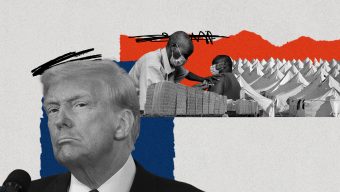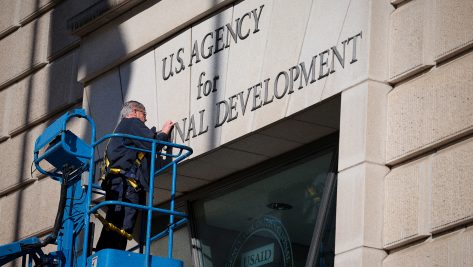Latin America is accustomed to instability. Its reliance on natural resource exports leads to frequent boom-and-bust cycles. Nevertheless, today’s international environment and far-reaching geopolitical changes threaten to heighten uncertainty and pose new challenges for the region. Opportunities may also emerge from its rich reserves of critical minerals that are essential for the energy transition and the upsurge in digitalization, along with its potential to become a major player in climate change mitigation and global food security.
Donald Trump’s second term brings fresh hurdles for Latin America and the Caribbean. The imposition of increased tariffs for countries such as Mexico and Brazil, coupled with their use as leverage to pressure nations to accept other US administration policies, as seen in Colombia’s fleeting opposition to accepting deportation flights, epitomize a new form of economic diplomacy that poses risks for countries whose trade is largely reliant on the United States. This kind of pressure weakens bilateral relations, highlighting the need for the region to seek new strategies and trade allies to safeguard its commercial interests.
There are only losers in a trade war. Higher tariffs on some products and the ensuing retaliation by the countries concerned trigger inflation by increasing goods prices. This makes it difficult to sustain the downward trend in interest rates at a time when they are already high. It may even push them up, hurting consumer spending and investment. The expected fall in international trade due to tariff hikes will also lead to slower economic growth and higher unemployment worldwide. This adverse global environment will hit Latin America hard and countries will need to draw on monetary and fiscal policy tools to mitigate its impact which, in turn, entails safeguarding the macroeconomic stability that has prevailed in the region during the crises of the past few years.
Meanwhile, many countries in the region have ramped up their trade, financial, and investment ties with China, a move that is frowned upon by their northern neighbor, engendering further trade and technological friction with the US government. China is now a key trading partner for several countries in the region – such as Brazil, Chile, and Peru – yet this relationship also calls for a profound strategic assessment as it may lead to a new form of reliance. Latin American countries need to build their bargaining skills and diversify their partnerships lest they become ensnared in the tensions between the major powers. Equally, these tensions might well be a boon for many countries in the region whose main trading partners are China and the United States since they may be able to negotiate better terms for their exports and investments.
The seemingly growing flow of deportees from the United States and ever-tighter immigration policies may have a significant social impact in some Latin American countries. We have already witnessed the migratory movements of millions of Venezuelans in recent years, straining the public services of several countries in the region. Internal and external migratory pressure calls for coordinated responses and more inclusive public policies to avert social strife and ensure migrant integration. Washington’s migration control measures are also turning into an opportunity for some countries, such as El Salvador, whose government is willing to accept deportees in exchange for economic advantages from the United States. This will be one of the most challenging issues in its relations with Mexico.
Another risk is the new US security policies that label criminal groups as terrorists, potentially leading to sanctions and restrictions on legitimate investments and hindering capital flows which will adversely affect the region’s economic growth. These measures, albeit targeted at security, may have unwanted knock-on effects on the financial stability and international image of the countries involved. These kinds of measures can be arbitrary and easily manipulated, with the U.S. potentially labelling certain groups as terrorists in order to exert pressure on particular countries.
The key priority is to boost productivity.
How can Latin America and the Caribbean mitigate these risks and find opportunities in the midst of adversity? The first thing is to do their homework. To begin with, it is crucial to maintain macroeconomic stability through fiscal consolidation and the independence of the region’s central banks, which have been instrumental in managing exchange rate volatility and cutting inflation. Likewise, unresolved structural reforms must be addressed with renewed urgency, prioritizing those that encourage private investment, shrink the informal labor market, and enhance institutional quality.
Probably the most significant unfinished business is the region’s productive transformation which involves diversifying its economies and making its exports more sophisticated. Investing in human capital, closing infrastructure gaps, and broadening market opportunities are essential here. The region would do well to target higher value-added sectors such as biotechnology, advanced manufacturing, and digital services. Modern industrial policies can also play a pivotal role in fostering technology and innovation clusters. The key priority is to boost productivity, which has declined in the region in recent years.
Latin America’s natural wealth is its major bargaining tool. It is time to integrate with like-minded regions such as the European Union, where democratic, cultural and, in the cases of Spain and Portugal, language values are shared. Finalizing the MERCOSUR-European Union agreement is an urgent priority, and leaders from both blocs must recognize its geopolitical significance, extending beyond trade and economic considerations, to help counterbalance the influence of the United States and China. The region should also capitalize on the fact that Mexico, Argentina, and Brazil are G20 members, and seek to work together to put forward regional rather than individual proposals. One of the biggest unresolved challenges in Latin America and the Caribbean is greater regional integration.
The region has the world’s largest reserves of lithium and copper, which are key minerals for the energy and digital transition, as well as the potential to feed a large part of the planet. These are assets which it should leverage to strengthen its global position and assert its influence in discussions on climate change and food security. However, these resources need to be harnessed in an environmentally sustainable and socially responsible way. Sound governance of natural resources could mark the difference between sustainable development and repeating past mistakes.
Tough times lie ahead. Against this background, the ability to adapt and mitigate economic and geopolitical risks will be paramount. Latin America and the Caribbean will have to navigate choppy waters yet combining economic consolidation and structural reform with the full potential of its natural advantages, as well as seeking new partnerships, may yield constructive outcomes. This will enable the region to seize the opportunities that come with crises and set out on a journey of economic development and enhanced wellbeing for Latin Americans. The challenge is enormous, but so is the potential.
© IE Insights.











